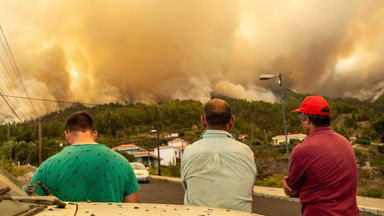A Martian rock that could hold the signs of life is exciting scientists like Katie Stack Morgan, a research scientist at the Jet Propulsion Laboratory and the deputy project scientist of the Mars 2020 Perseverance Rover.
This "truly compelling sample" found by the rover could answer the question of whether life existed on Mars, Stack Morgan told Newsweek.
The rock, which has been nicknamed Cheyava Falls, after a crevasse in the Grand Canyon, was found in July during the exploration of the Jezero Crater.
The rover's instruments found organic compounds within the sample; essential ingredients required for the formation of life.
"This is exactly the kind of chemistry that microbes on Earth mediate and take advantage of as a source of energy to fuel their own microbial metabolism," Stack Morgan told Newsweek.
The arrowhead-shaped rock measures 1 meter by 0.6 meters (3.3 feet by 2.9 feet) and is one of 25 samples taken so far by the Perseverance Rover that could be delivered to Earth by a future return mission.
"We are really eager to get particularly that sample back, because it could be that there are signs of life below what we can detect with your eye," said Stack Morgan.
"You can see the structure in there that might be a fingerprint that life left behind, and that's really exciting to us, and it's one that we are very eager to check out and bring back home.
"We have what we believe is a potential bio-signature, something that could have formed by life, but needs more investigation. We have the building blocks of life in these rocks.
"First of course we have the organic molecules, so we have evidence that they're organic molecules. Of course, organics don't mean that life is there, because organics can have a biological origin or a non-biological origin.
"Certainly, the presence of organics gets you thinking about it, because that's life as you know it, right? It's made up of those organic molecules.
"That's the first aspect that makes us excited about the rock, that's one of the things we are looking for.
"Next, we have these leopard spots. We call them leopard spots because they are little white splotches in an otherwise red rock.
"The rock of course is red because it has iron in it. When you combine the iron in the rock plus water, plus organics you have these chemical reactions—on Earth microbes are often involved.
"The question is was life involved in this reaction or not? Because this is just chemistry, you can get this to happen without life being involved, but here on Earth life is involved in this kind of reaction."
Disclaimer: The copyright of this article belongs to the original author. Reposting this article is solely for the purpose of information dissemination and does not constitute any investment advice. If there is any infringement, please contact us immediately. We will make corrections or deletions as necessary. Thank you.



